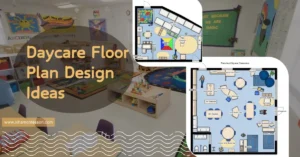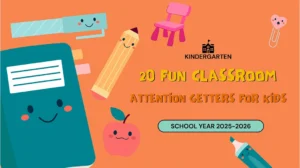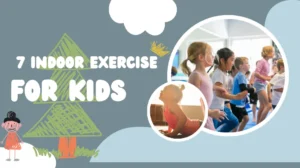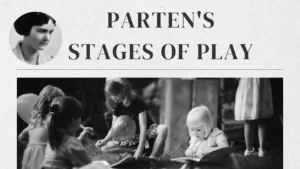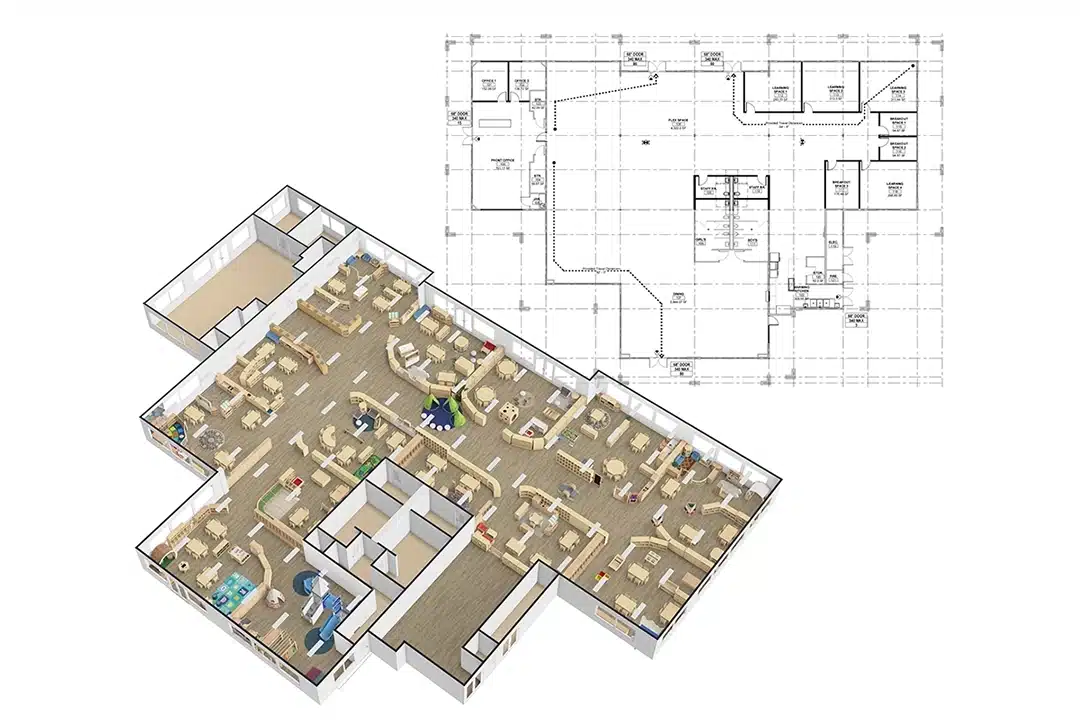Is your child tugging off their diaper more often? Does your toddler watch you in the bathroom and start asking questions? Are you worried potty training might turn into a messy, frustrating process? Many parents and educators feel unsure about when and how to begin potty training, especially when pressure builds from peers or school timelines.
Potty training is more than just a developmental milestone—it’s a powerful step toward a child’s independence, confidence, and self-care. Successful potty training builds good hygiene habits early, reduces dependence on diapers, saves long-term costs, and minimizes health risks like diaper rash and urinary tract infections. For parents and educators alike, practical potty training also means fewer disruptions in the classroom or at home, smoother routines, and children who feel proud of their progress.
Whether you’re a parent at home or managing a daycare, knowing how to start potty training makes all the difference. It’s a process filled with excitement, uncertainty, and, yes, a few messes. Mastering potty training takes patience, planning, and understanding of your child’s unique needs and readiness. This comprehensive guide to potty training for toddlers offers proven strategies, real-life tips, and everything you need to make the journey smooth and successful.
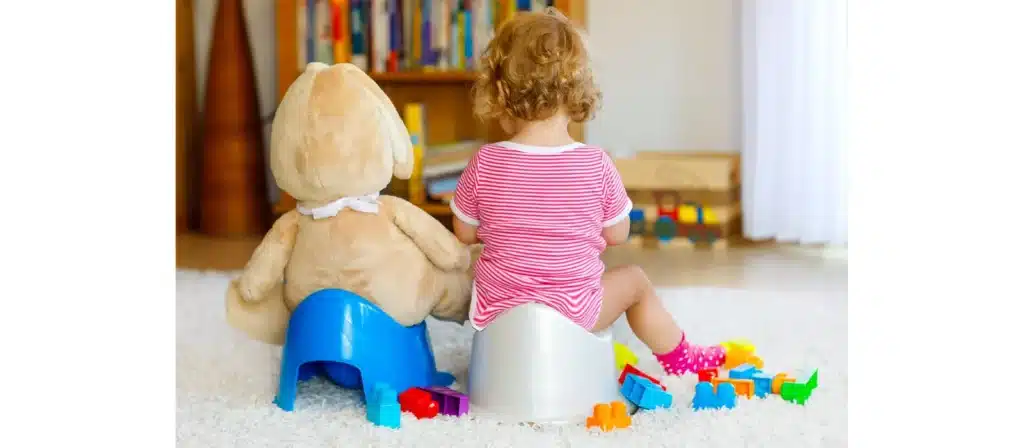
What is Potty Training?
Potty training refers to the gradual process of teaching toddlers to control and coordinate their bladder and bowel movements to use a potty or toilet rather than diapers. It represents a vital step in a child’s growing independence and bodily awareness. This transition requires not just physical readiness but also emotional maturity and behavioral adaptation. Potty training is not just about using the toilet—it is about empowering a toddler to recognize their body’s signals, respond appropriately, and eventually develop consistent hygiene habits.
Many parents misunderstand potty training as a quick weekend affair. In truth, it’s a flexible, child-led process. Some children may show interest as early as 18 months, while others may not be ready until after their third birthday. Parents must adjust their expectations and focus on progress, not perfection. Mastery happens in stages—dry diapers, using the potty with reminders, initiating trips independently, and finally, accident-free nights.
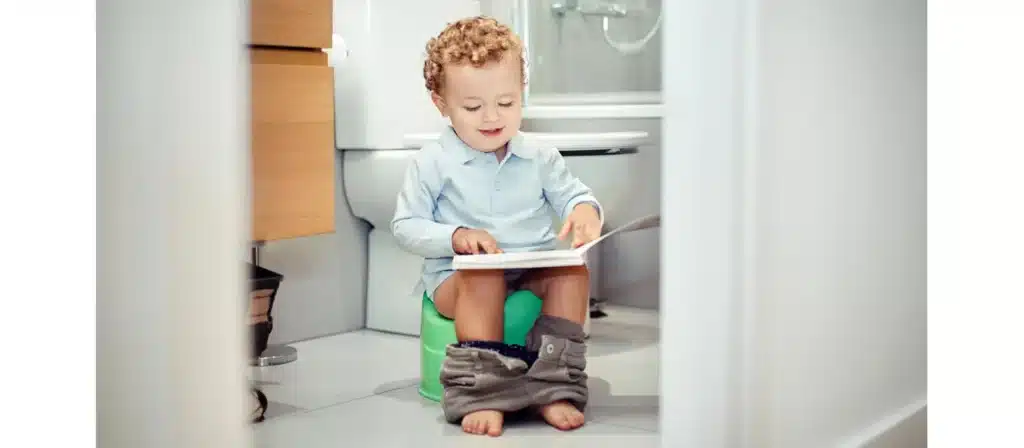
When to Start Potty Training?
There’s no universally “correct” age to start potty training. Instead, timing should be based on developmental cues rather than the calendar. Most children begin showing readiness between 18 and 30 months. However, some children may not be ready until age three or later. In educational settings, teachers often wait until the child displays clear signs of readiness to ensure a smoother process.
Signs of Potty Training Readiness
Recognizing signs of readiness ensures that potty training is more efficient and less stressful.
Physical Signs:
- Staying dry for at least two hours during the day or after naps
- Bowel movements become regular and predictable
- Ability to walk to and from the potty
- Can sit and stand up without assistance
Behavioral Signs:
- Expressing discomfort with dirty diapers
- Showing interest in others using the bathroom
- Hiding during bowel movements
- Imitating adult behavior, including flushing
- Expressing interest in wearing underwear
Cognitive Signs:
- Understanding and following basic instructions
- Recognizing the urge to go and verbalizing it
- Understanding cause and effect (“pee goes in potty”)
- Showing pride in accomplishments
- Associating the sensation of a full bladder with the act of using the toilet
Signs of Not Being Ready for Potty Training
- Regular tantrums about using the toilet
- Complete disinterest in potty topics
- Inability to sit still for short periods
- Resistance or fear of the potty
Pushing potty training on a child who isn’t ready can lead to resistance, fear, and regression. That’s why it’s essential to wait for genuine signs and prepare the environment to support them.
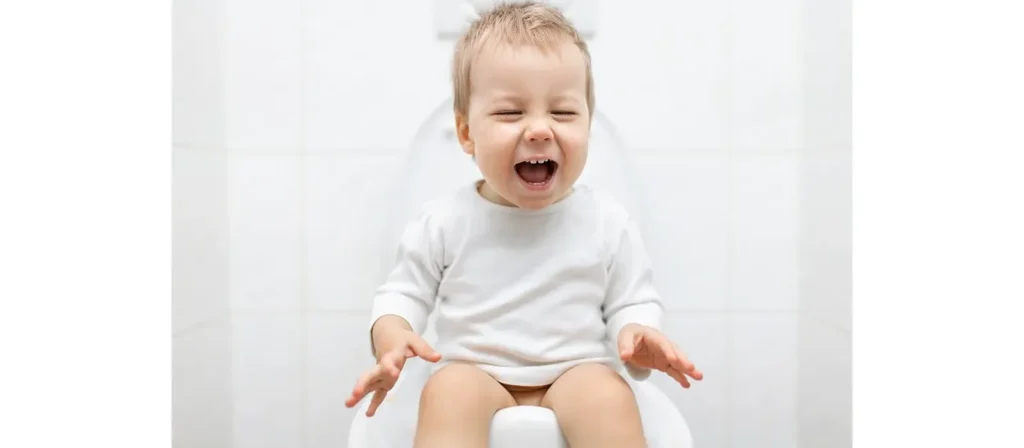
When to Stop Potty Training?
Knowing when to pause or stop potty training is as important as knowing when to begin. If your child is showing signs of frustration, fear, or frequent accidents after weeks of consistent effort, it may be wise to take a break. Other signals include:
- Total refusal to sit on the potty
- Significant life changes causing stress (e.g., new sibling, moving house)
- Lack of progress despite consistent efforts
It’s perfectly acceptable to stop and try again in a few weeks. Pressuring a child only delays long-term success.
How to Prepare Your Child for Potty Training?
A well-prepared child is far more likely to succeed in potty training. Preparation can begin weeks or even months before formal training starts.
1. Emphasize the positive aspects of toileting
Speak about using the potty in a positive, encouraging tone. Make it sound like a grown-up achievement. Avoid associating toilet use with shame, punishment, or stress.
Children need to associate bathroom habits with independence and self-confidence. In Montessori classrooms, we often see children eager to use the toilet simply because it’s part of their daily environment and is seen as usual.
2. Establish a standard bathroom talk
Use consistent and clear vocabulary for body parts and bathroom activities. Avoid slang or confusing terms. For example, use “pee,” “poop,” “potty,” and “toilet” consistently.
This clarity helps children communicate their needs and builds familiarity with the process. Everyone involved—parents, caregivers, and teachers—should use the same terms.
3. Show Your Child How to Use the Potty
Demonstrate how the potty works—flushing, wiping, washing hands. Let your child observe you or a trusted sibling use the toilet. Many children learn through mimicry, so seeing it in action reduces mystery and fear.
4. Explain Hygiene Practices
Teach your child the importance of wiping, flushing, and washing hands. Make it part of the routine from the very beginning. Use step stools if necessary to reach the sink comfortably.
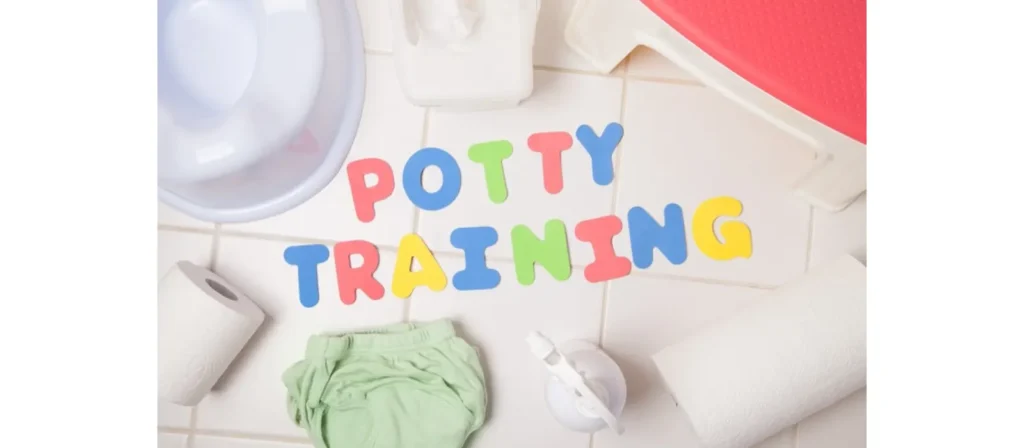
Potty Training Tips
Potty training is a process that involves more than just introducing a toilet. A structured, strategic approach can help both you and your toddler feel confident and booming. Below are essential tips, each broken down for practical implementation.
1. Make Sure the Potty Is Ready
Before introducing your child to potty training, ensure that the potty itself is accessible, safe, and appealing. Choose between a standalone potty chair or a seat reducer that fits securely onto a regular toilet. Many children feel intimidated by the standard toilet due to its size and the fear of falling in. A child-friendly potty that sits low to the ground offers them stability and confidence.
- Introduce the potty before training begins: Please leave it in sight for a few weeks. Let your child sit on it with clothes on, inspect it, and incorporate it into pretend play.
- Give the potty a name: This personalizes the experience. You can say, “Let’s go sit on Mr. Potty!”
- Make it accessible: It should be in a room your child frequents and easy to reach without adult help. If you use a seat reducer, place a non-slip stool nearby.
- Ensure physical comfort: Some children fear falling in. Check that feet can touch the ground or a step and that their bottom fits securely.
- Demonstrate its use: Show how toilet paper is used, how to flush, and how to wash hands afterward—even before they’re using it.

2. Involve Your Child in Choosing the Potty
Involving your toddler in the potty selection process boosts their sense of ownership. Take them shopping—and let them choose the color, shape, or themed potty they like best. Some models feature cartoon characters, music, or flushing sounds, which can add fun and interest.
When children help pick their potty, they feel it belongs to them, which increases the likelihood that they’ll use it. After purchase, encourage them to decorate it with stickers or help find the best spot in the house for it. This builds excitement and removes some of the mystery or anxiety surrounding the toilet.
3. Place the Potty in a Convenient Place
Convenience reduces the likelihood of accidents and tantrums. Strategic placement also makes the potty part of the child’s natural environment.
- Start with the most-used rooms: If your toddler plays in the living room, consider placing a potty there (at least during the early stages).
- Avoid having to rush: Toddlers often wait until the last second. A nearby potty makes it more likely they’ll make it in time.
- Bathroom logistics matter: If you live in a multi-story house, place one potty on each floor. Accessibility trumps aesthetics during training.
- Nighttime considerations: Place a potty next to the bed for early morning or nighttime attempts, especially if they’re not yet comfortable going to the bathroom alone.
When the potty is within reach, the idea of using it becomes more manageable—and less stressful—for both the child and the parent.
4. Create a Toilet Schedule
Routine builds habits. Establishing a regular potty schedule helps train your child’s body and mind to expect bathroom trips at specific times. Ideal moments include:
- After waking up
- After meals and snacks
- Before and after naps
- Before bed
- Every 2–3 hours during the day
Initially, set reminders and accompany your child each time. Even if they don’t need to go, the repetition conditions their body to get used to the rhythm. Over time, this reduces accidents and builds bodily awareness.
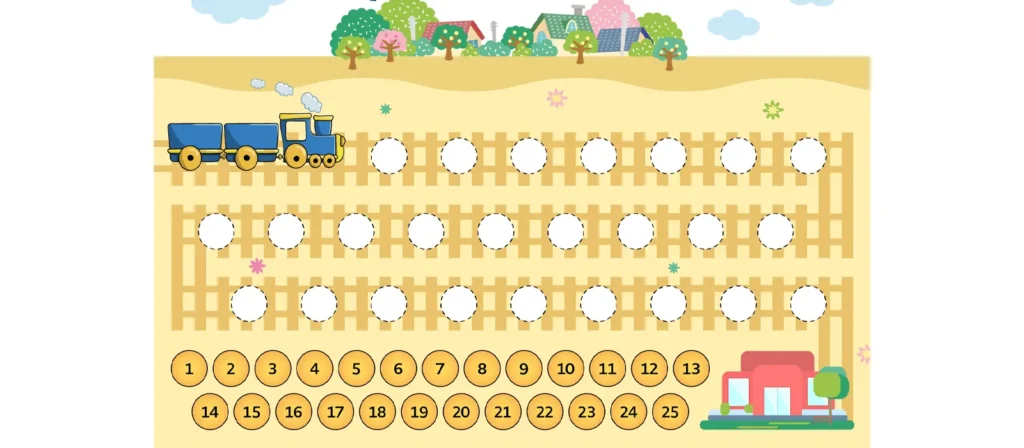
5. Use a Sticker Chart to Track Progress
Visual tools like sticker charts turn potty training into a game. Each successful trip to the potty earns your child a sticker or stamp on their chart. Set attainable goals, such as five stickers in a row, which could lead to a small reward like a toy, outing, or extra playtime.
This method promotes positive reinforcement and gives your child a tangible way to track their achievements. Choose stickers they love—animals, stars, favorite characters—and keep the chart somewhere they can easily see it.
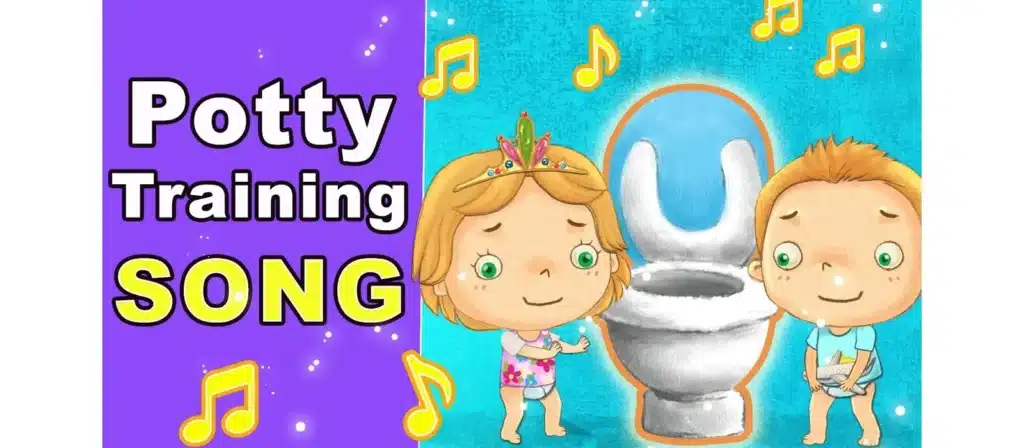
6. Toilet Training Songs
Singing during potty time helps ease tension and distract from pressure. There are plenty of catchy, potty-themed songs available online that make the process fun. You can also make up your own based on your child’s name or favorite tunes.
- Use familiar tunes: Try reworking “Twinkle Twinkle” or “The Wheels on the Bus” with potty-themed lyrics.
- Makeup songs together: Even simple rhymes like “Pee goes in the potty, not on the floor” make an impact.
- Use music as a timer: Sing or play a 1–2 minute song while your child sits to encourage them to stay put.
- Choose themed content: Daniel Tiger, Elmo, and Blippi have potty songs that many toddlers adore.
Songs help mark potty time as a playful experience rather than a chore. They also lengthen the amount of time your child sits on the potty, increasing the chance of success.
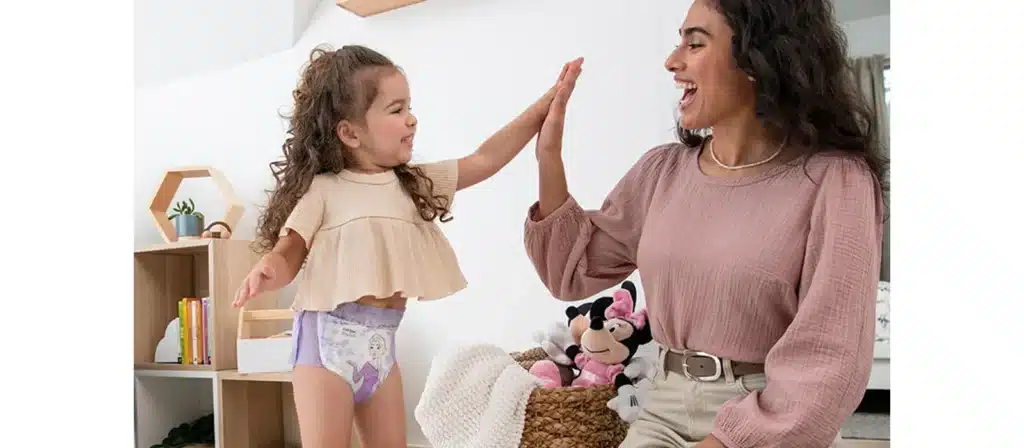
7. Use Rewards and Encouragement
The right type of reinforcement creates momentum and confidence.
Start with consistent verbal praise. Say things like:
- “You did great using the potty!”
- “You’re listening to your body—well done!”
Offer small rewards for effort. Consider:
- Choosing a Bedtime Book
- Earning tokens for a weekend prize
- Special cuddle time
Avoid over-reliance on treats: Food rewards should be a last resort and used sparingly to avoid dependency.
Celebrate milestones: A small “potty graduation” for staying dry for a week can make a child feel like a champion.
Reinforcement should always be about building internal motivation, not fear or compliance.
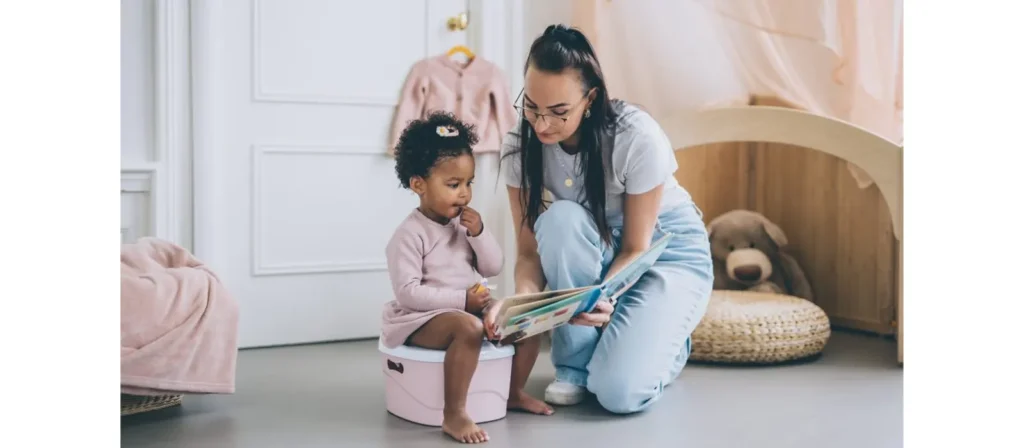
8. Keep Him Motivated
Potty training motivation can wane, especially if your child experiences multiple accidents or doesn’t see quick results. Keep morale high with positive language, visual progress (like charts), and sharing stories about other children or family members who’ve succeeded.
- Rotate incentives: If sticker charts lose their luster, try a marble jar or “potty points” system.
- Talk about progress often: “Remember how you told me you needed to pee today? That was so grown-up!”
- Tell social stories: Reading about other children who learned to use the potty can normalize the process and make it exciting.
- Involve siblings: Older brothers or sisters can cheer on younger ones, creating a supportive dynamic.
Reassure them that every accident is part of learning. Consistent positivity ensures that motivation doesn’t drop off even during challenging moments.
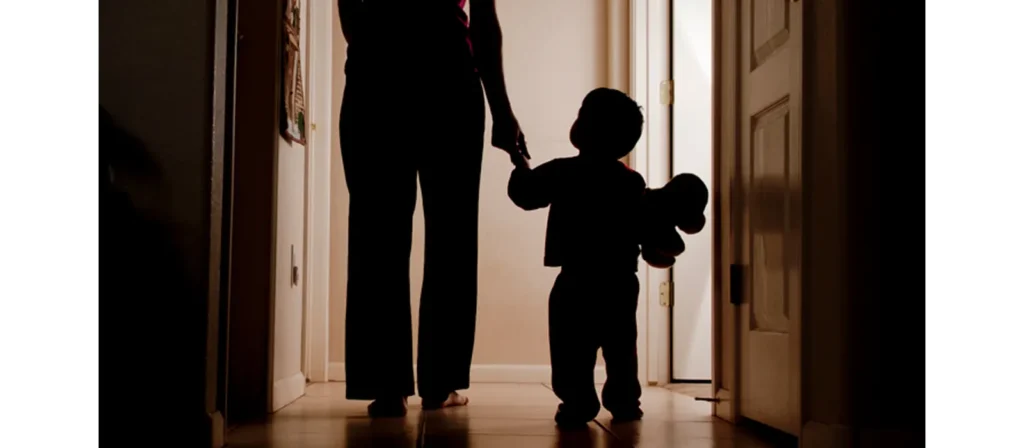
9. Day and Night Potty Training
Daytime training usually precedes nighttime training. Start by focusing on getting your child dry during waking hours. Once this is mostly successful, and your child wakes up dry several mornings in a row, you can gradually phase out nighttime diapers.
Daytime Training:
- Happens first because toddlers are alert and active.
- Easier to track successes and reinforce them immediately.
- Start during warmer months when fewer clothes make accidents easier to handle.
Nighttime Training:
- Takes longer and requires bladder development and hormonal regulation.
- Don’t pressure your child to stay dry overnight immediately after daytime success.
- Use mattress protectors and keep spare sheets ready.
- Celebrate dry nights—but avoid punishment for wet ones.
Recognize that nighttime control often develops later and may take months—or even years—for some children.
Differences between day and night:
| Aspect | Day Training | Night Training |
|---|---|---|
| Control | Conscious control of bladder/bowel | Involuntary—body signals must develop |
| Timeline | Starts around 18–24 months | May take until 4–5 years |
| Tools | Potty, schedule, underwear | Mattress covers, overnight pants |
| Success cues | Child asks or goes on their own | Child wakes up dry |
10. Practice Aiming
For boys, aiming can be a fun yet important skill to learn. Starting with sitting is recommended to ensure full bladder emptying and coordination. When transitioning to standing:
- Place targets like floating cereal pieces or special “potty targets” in the toilet
- Turn it into a game where they “splash” the target
Practicing aiming reduces mess and fosters a sense of control. Be sure to teach proper hygiene afterward—shaking off, wiping any spills, and washing hands.
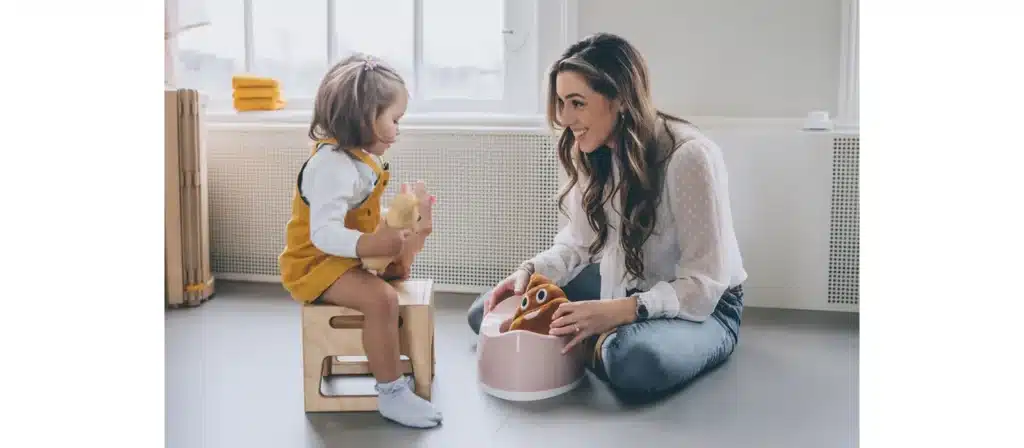
11. Show and Tell
Toddlers learn best by watching and copying. Show your child how the toilet works by flushing and washing hands afterward. If appropriate, let them watch a parent or older sibling. Demonstrate using dolls or toys to act out potty steps.
Explain what’s happening in simple terms: “This is where the pee goes,” or “We wipe and then flush.” These explanations demystify the process and build understanding.
12. Don’t Punish Your Child for Mistakes
Accidents are an expected part of potty training. Punishment, scolding, or expressing disappointment can lead to fear and withholding, which may cause constipation or regression.
Instead, respond with empathy and encouragement. Calmly guide your child through clean-up and say, “It’s okay, we’ll try again next time.” This teaches responsibility without shame and keeps the potty training experience positive.

13. Be Patient
No two children are alike. Some may be potty trained in a few days, while others take months. There will be regressions, accidents, and setbacks, especially during transitions or illness.
Patience is more than just waiting—it’s providing consistent, loving support while your child learns at their own pace. Let go of the pressure to meet milestones by a certain age and focus on progress, not perfection.
14. Avoid Fighting
Power struggles around potty training often backfire. If your child refuses, resists, or shows strong negative emotions, take a step back. Forcing them to sit or yelling will only delay the process.
Pause the training, wait a few days or weeks, and try again with a different strategy. Let your child feel like they’re in control—it makes them more likely to cooperate willingly.
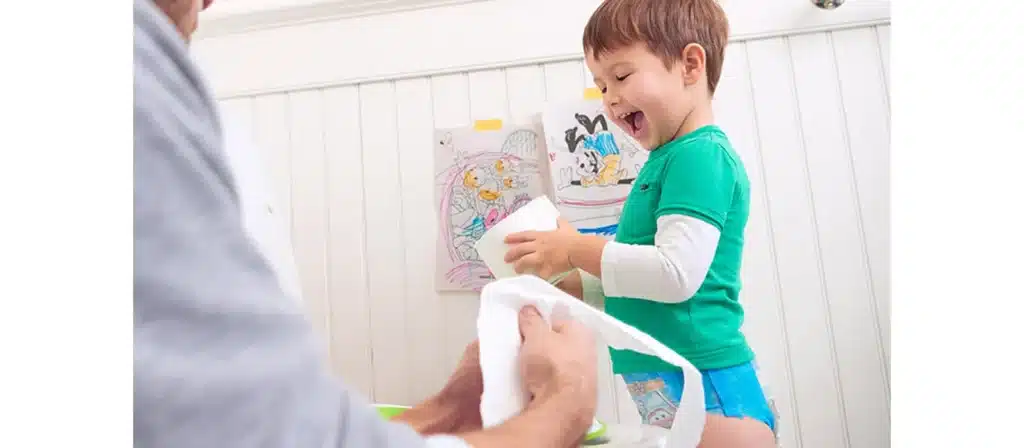
Potty Training Tips for Boys
Training boys comes with unique challenges and playful opportunities. The key lies in blending patience with practical strategy.
Start with Sitting
Although boys eventually learn to urinate standing up, begin the process by having them sit on the potty for both pee and poop.
- It simplifies coordination during early training stages.
- Prevents confusion between urinating and having a bowel movement.
- Helps avoid unnecessary mess.
Once they’re comfortable, you can gradually introduce standing.
Introduce Standing with Fun Aiming Games
When your child is ready, make standing up fun—not stressful.
- Use floating targets (like Cheerios or toilet-safe stickers) to help them aim.
- Practice in the bathtub first (without water) to reduce pressure.
- Try child-size urinals that mount to the wall—many come with spinning targets for interactive fun.
This gamifies the process, builds precision, and helps your child look forward to potty time.
Teach Hygiene from Day One
Boys often want to flush and leave—but proper hygiene is non-negotiable.
- Teach them to shake, wipe the tip if needed, and always flush.
- Emphasize handwashing with soap every time—make it a non-skippable part of the routine.
- Use step stools and fun soap dispensers to encourage independence.
Use Male Role Models
Toddlers often learn best by watching someone they admire.
- Encourage Dad, older brothers, or trusted male figures to model good bathroom habits.
- Keep it casual—“Let’s go pee like Daddy!”—without pressure or embarrassment.
Visual learning speeds up understanding and boosts confidence.
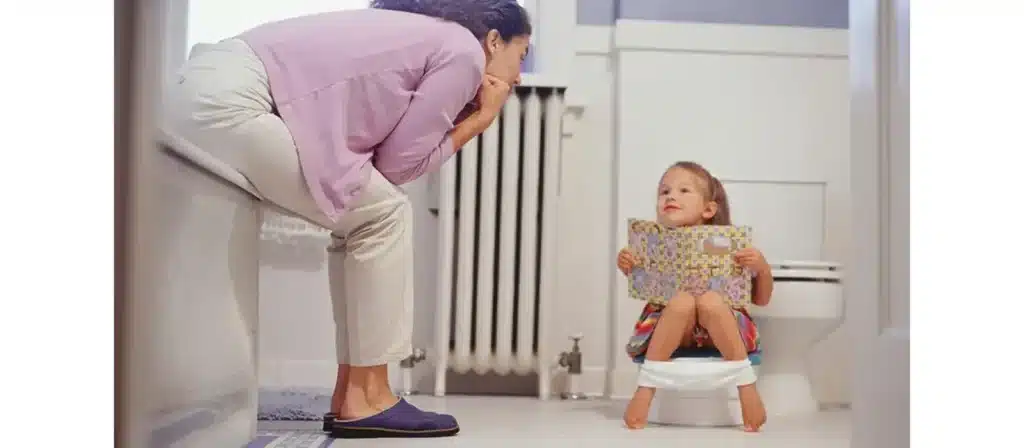
Potty Training Tips for Girls
Training girls involves a different set of considerations, especially regarding hygiene and comfort.
Wipe Front to Back
This hygiene rule is essential to prevent urinary tract infections (UTIs).
- Teach her to gently wipe from front to back every time she pees or poops.
- Use soft, hypoallergenic toilet paper.
- Consider pre-moistened flushable wipes (fragrance-free) for extra cleanliness during the early stages.
Reinforce this through songs or simple chants that help her remember the direction.
Dress Her for Success
What your daughter wears affects how easily and quickly she can get to the potty.
- Choose loose-fitting clothes with elastic waists.
- Avoid snaps, buttons, and tight leggings during training.
- Skirts and dresses are great for quick access, especially in emergencies.
Being able to undress independently boosts her confidence and reduces accidents.
Make Sitting Comfortable and Fun
Girls sit to pee and poop, so potty chairs and seat inserts should be welcoming.
- Choose one with a soft cushion or warm design.
- Add books, music, or small toys to keep her relaxed while she waits.
- Reward her with a story or special activity afterward.
The more time she spends happily sitting, the quicker she associates it with positive outcomes.
Use Empowerment Language
Girls respond well to messages of strength and growth.
- Use phrases like “You’re learning to take care of your body!” or “You’re becoming a big, smart girl!”
- Avoid any language that implies being dirty or gross—it can damage her self-esteem.
Frame the process as part of becoming capable, clean, and empowered.
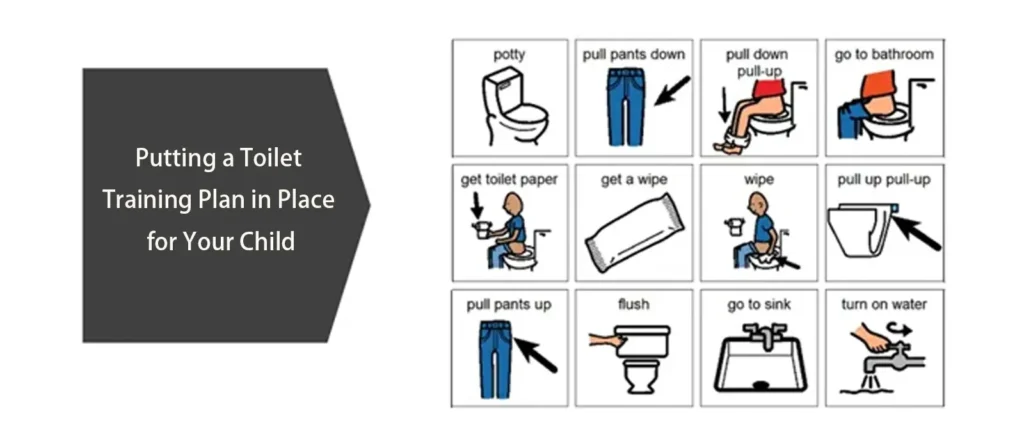
Putting a Toilet Training Plan in Place for Your Child
A step-by-step plan is vital for teaching your toddler how to use the toilet confidently. Each step, from pulling down pants to washing hands, should be taught patiently and repeatedly until the child can perform them independently. Breaking the process into manageable segments helps children focus and build muscle memory.
Pants Down
Start by teaching your child to recognize when they need to go. Encourage them to communicate that need and immediately guide them to the potty. Then, show them how to pull down their pants and underwear to just below the knees—not all the way off—so they can still move around if necessary. Choosing clothes with elastic waistbands makes this easier.
Sit on Toilet
Guide your child to sit comfortably on the potty. If they’re using a seat insert on a regular toilet, ensure there’s a step stool to support their feet. Feet should rest flat to provide stability, which helps them relax their muscles for a successful bowel movement or urination.
Take Toilet Paper
Once finished, instruct your child to take a manageable amount of toilet paper. Show them how much is generally enough—usually about 4 to 6 squares—and help them tear it off the roll carefully. If they struggle, practice during non-potty times with dry runs.
Wipe Until Clean
Wiping correctly is crucial for hygiene. Teach your child to:
- Wipe from front to back (especially for girls).
- Use each piece of toilet paper only once.
- Continue wiping until the paper comes back clean.
Be patient—this step takes time. Start by helping and gradually reduce assistance as your child builds skill and awareness.
Flush Toilet
Flushing may initially frighten some children due to the noise. Let your child observe you flushing first and explain what it does. Once they’re comfortable, include flushing as a mandatory part of the process. Make it routine—“We always flush after using the toilet.”
Pants Up
Teach your child to pull their pants and underwear up after flushing. Remind them to check that everything is clean and dry first. Encourage them to adjust their clothes neatly, reinforcing pride in doing it all by themselves.
Wash Hands
Handwashing should follow every toilet visit. Teach these essential steps:
- Turn on water
- Wet hands
- Apply soap
- Rub hands together (tops, palms, fingers) for at least 20 seconds
- Rinse and dry with a clean towel
Use fun songs or timers to encourage thorough handwashing, making it an enjoyable routine instead of a chore.
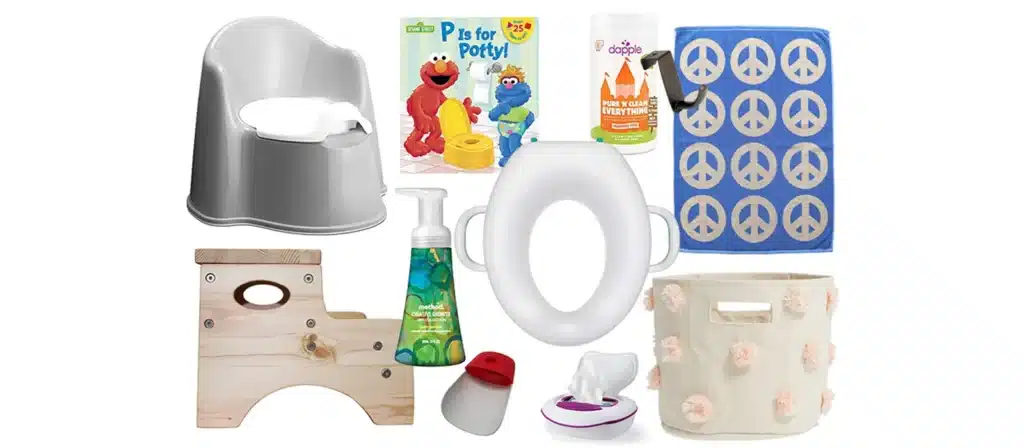
Potty Training Equipment
Having the right potty training tools can make potty training more successful and less stressful. The right gear boosts your child’s comfort and confidence and reduces frustration for parents.
Potty
- Standalone Potty Chairs: Toddler-sized with a removable bowl for easy cleaning.
- Potty Seats: Sit on top of standard toilets to help toddlers transition to adult toilets.
- Travel Potties: Portable, foldable options for car trips or outings.
- Potty Chairs with Steps: Combine a potty seat and step stool to help your child access the regular toilet independently.
Training Pants and Pull-Ups
- Disposable Pull-Ups: Easy to pull down and up, with moisture-absorbing material similar to diapers.
- Reusable Cloth Training Pants: Reusable Cloth Training Pants: Environmentally friendly and allow the child to feel wetness.
- Hybrid Pants: Feature an inner liner but are shaped like regular underwear for comfort and confidence.
Underwear
- Cotton toddler underwear: Promotes a sense of independence and comfort.
- Character-themed underwear: Motivates children with favorite animals or cartoon figures.
- Thicker training underwear: Offers extra absorbency for early learners.
Children’s Books or Toys
Educational tools reinforce potty training concepts in a fun, non-threatening way.
- Books:
- “Potty” by Leslie Patricelli
- “Everyone Poops” by Taro Gomi
- “Daniel Tiger: Potty Time”
- Toys:
- Potty-training dolls
- Mini potty sets for stuffed animals
- Flushable sound buttons
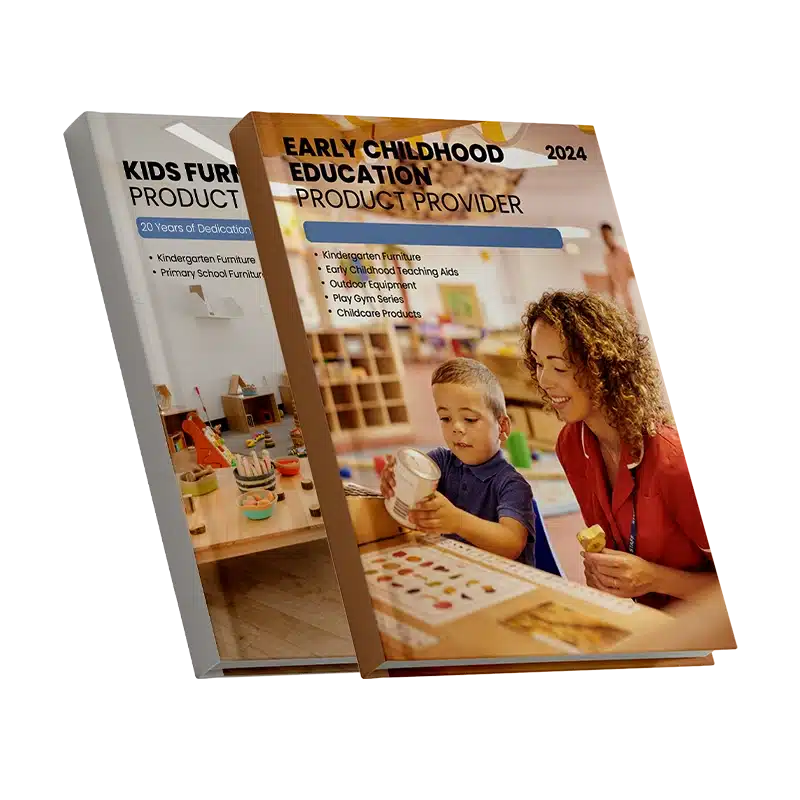
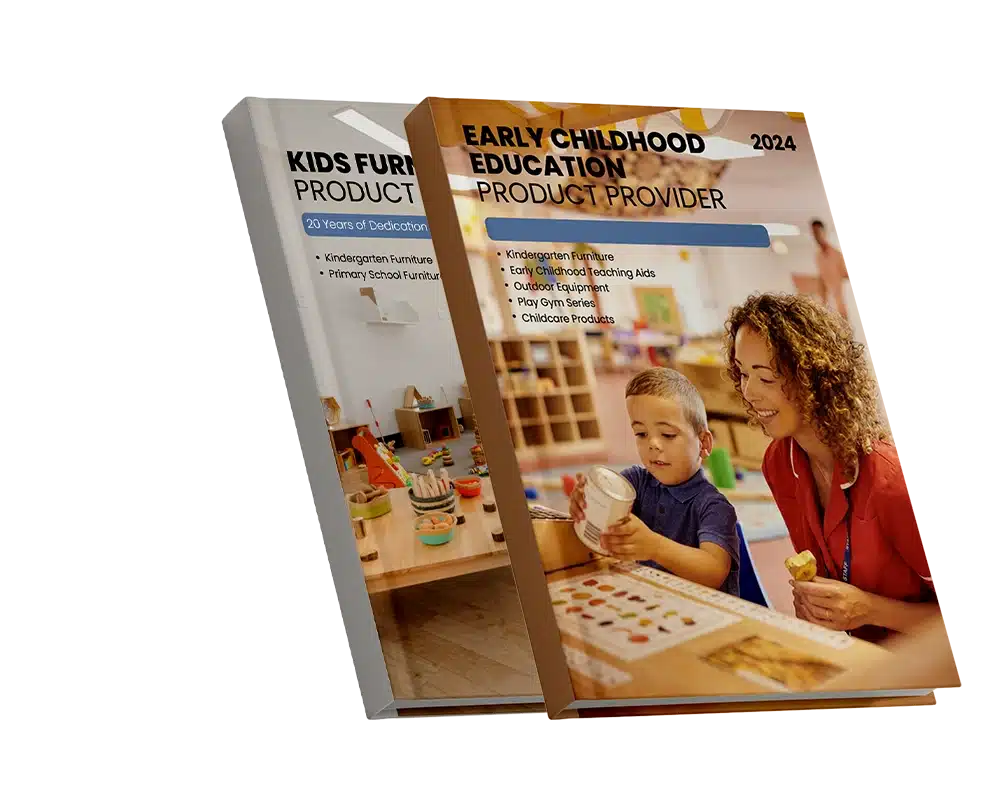
Potty Training at Daycare or Preschool
Successful potty training in group settings requires coordination between parents and educators. Consistency between home and school environments prevents confusion and supports routine development.
- Communicate your child’s potty training stage with teachers.
- Share your child’s potty schedule and preferences.
- Pack extra clothes, wipes, and even a backup potty seat if needed.
- Request feedback on progress or accidents.
Preschools with potty training support may include built-in routines, designated potty areas, and visual reminders. Choose a facility aligned with your parenting philosophy.
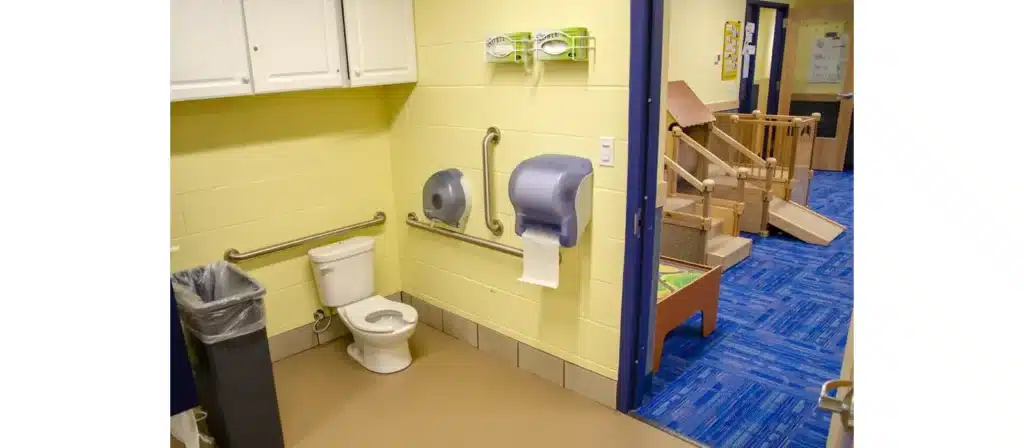
How to Create a Potty Routine?
A structured routine makes potty use habitual instead of optional.
- Set potty times. Choose consistent times based on your child’s natural rhythms—morning wake-up, post-meals, and before naps or bed.
- Use a timer. Set reminders every 2–3 hours at first. Choose a timer with fun sounds or visuals.
- Cue with activities. Say, “After snack, we sit on the potty.” Linking it to events helps toddlers remember.
- Create a visual schedule. Use pictures or stickers to show daily potty times. Toddlers love tracking their progress.
- Be flexible. Adapt the schedule to your child’s behavior. If they resist every time, reduce pressure or change timing.
The goal is to make potty visits predictable, expected, and non-negotiable in a gentle way.
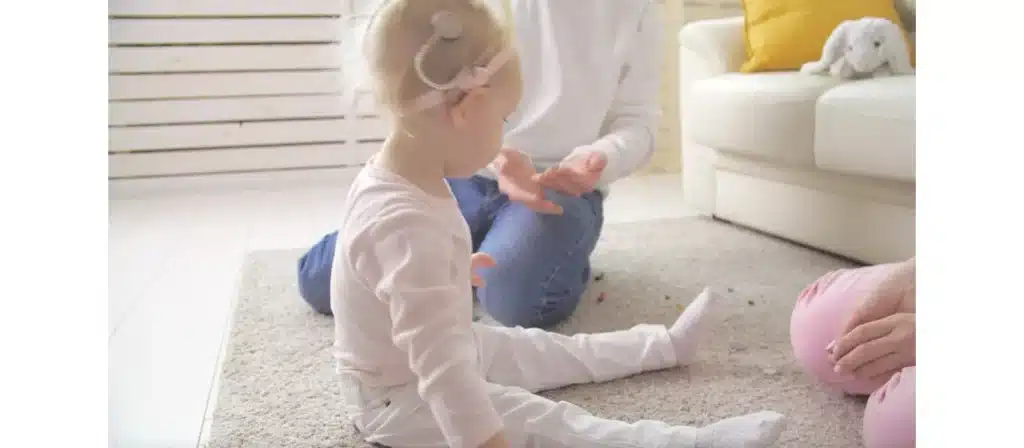
Potty Training for Children with Special Needs
Children with developmental delays, sensory processing disorders, or physical disabilities may need personalized potty training strategies. Begin by consulting your pediatrician or an occupational therapist for guidance.
timelines.
- Consult a pediatric specialist: Occupational therapists or developmental pediatricians can help create a personalized plan.
- Break it into micro-steps: Instead of going from diapers to full independence, teach small tasks: pulling down pants, sitting, flushing, etc.
- Use visual supports: Picture schedules, symbols, or social stories can clarify the process.
- Establish sensory-friendly environments: Some children may be distressed by cold toilet seats, loud flushes, or bright lights. Adapt accordingly.
- Practice body awareness: Use mirrors, mirrors, and charts to help identify sensations like fullness or wetness.
Progress may take longer, but with consistency and sensitivity, success is absolutely achievable.

How to Get Your Child to Wipe His Own Butt?
Teaching wiping is often overlooked but essential to full toilet independence. Start once your child consistently uses the toilet.
- Begin with demonstrations using dolls, toys, or even yourself (over clothing).
- Use flushable wipes before transitioning to toilet paper—these are easier to manage at first.
- Teach front-to-back wiping, especially important for girls to prevent infections.
- Show them how to check for cleanliness and repeat wiping as needed.
- Praise attempts, even if imperfect, and guide them step-by-step as they gain skill.
Over time, encourage your child to wipe independently, flush, and wash hands—all while under supervision until consistency and hygiene improve.
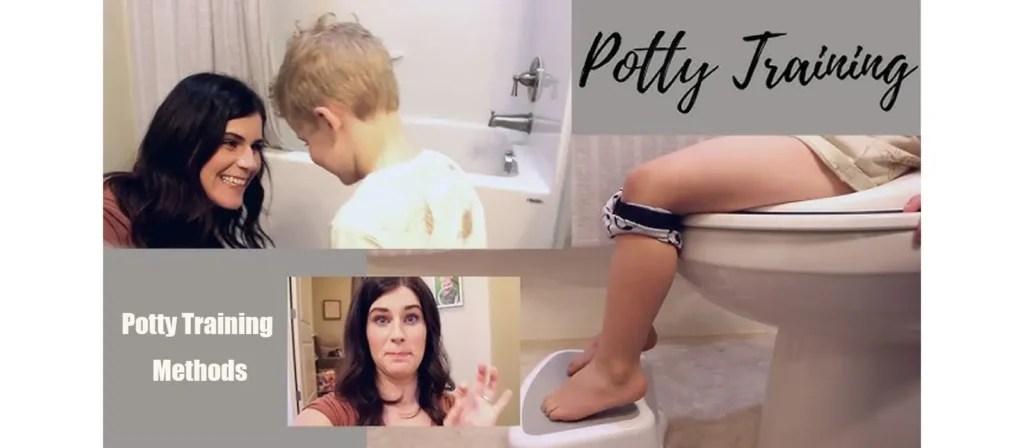
Potty Training Methods
There is no single “right” way to potty train. Different methods suit different children and parenting styles. The best approach is one that aligns with your child’s temperament, your daily routine, and your patience level.
One-Day Method
Also known as the “Toilet Training in a Day” approach, this intensive strategy promises quick results with focused effort.
- Requires a full day of undivided attention and preparation.
- Involves using dolls to model potty behavior.
- Parents guide the child through the routine repeatedly—sitting on the potty, wiping, flushing, washing hands.
- Accidents are expected and corrected in real-time with prompts and repetition.
- Works best with children who are developmentally ready and respond well to structure.
While success in one day is possible for some, most children continue to need reinforcement and reminders for several weeks.
Three-Day Method
This popular method condenses initial training into three focused days.
- Remove all diapers and commit to underwear only, even during naps.
- Offer constant reminders to sit on the potty and praise all successes.
- Clean up accidents calmly and without consequence.
- Focus entirely on your child for these three days—cancel outings and minimize distractions.
- At the end, many children will have a solid understanding of what’s expected, even if they still need support.
This method often works well with children who show strong readiness signals and thrive on routine.
Pull-Up Training Method
A gentler, more gradual approach, this method uses pull-up training pants as a bridge between diapers and underwear.
- Encourages independence—children can pull them on and off.
- Good for families with less flexible schedules.
- Helpful during naps, outings, or for overnight use.
- Children may still treat pull-ups like diapers unless coached to view them differently.
This method may slow progress slightly but reduces stress and conflict, especially for more sensitive children.
Montessori Potty Training Method
Rooted in Maria Montessori’s principles, this method encourages early, child-led independence.
- Start as early as 12–18 months when signs of readiness appear.
- Use real toilets or small floor potties—avoid gimmicks or music.
- Create a bathroom environment that’s fully accessible to the child.
- Involve the child in every step: flushing, wiping, washing hands.
- No rewards or punishments; the process is viewed as natural and self-directed.
Montessori potty training emphasizes respect for the child’s autonomy and often results in early and confident toileting.
How Long Does Potty Training Take?
Potty training timelines vary based on a child’s readiness, the method used, and consistency from caregivers. While some children show signs of independence within days, others may take several months to become reliably trained.
On average:
- Most children start between 18–30 months.
- Daytime training often takes 3–6 months.
- Nighttime training can take several additional months to a few years.
Factors that affect timing:
- Physical readiness (bladder control, motor skills)
- Cognitive understanding
- Emotional stability and interest
- Parental consistency and routine
It’s important to remember that accidents and regressions are part of the learning process. Avoid comparing your child’s progress to others. What matters is a supportive, encouraging environment.
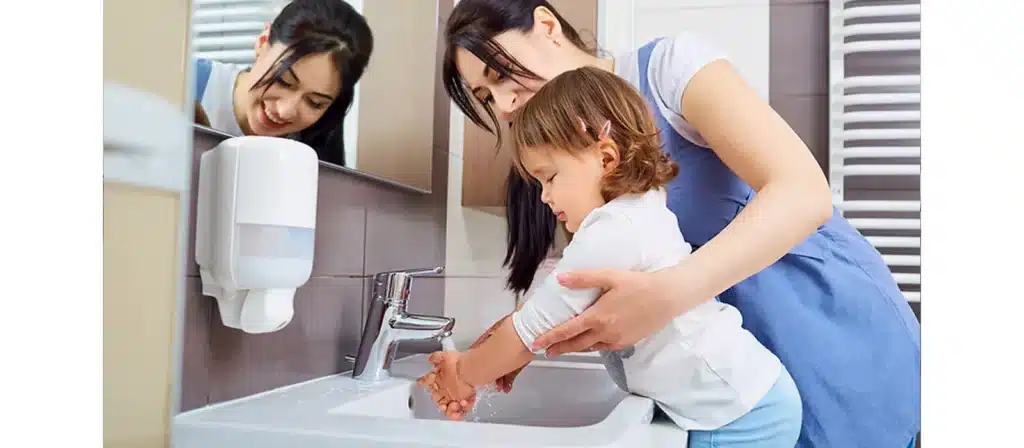
How to Keep Your Child Clean and Hygienic?
Toilet training goes hand-in-hand with teaching hygiene. Helping your child build good habits early leads to lifelong health and self-respect.
Steps to follow:
- Teach proper wiping techniques: Front-to-back for girls; thorough wiping for boys. Use flushable wipes at first, then transition to toilet paper.
- Encourage handwashing: Make handwashing a non-negotiable step after every potty trip. Use child-safe soap and teach proper technique—scrubbing all parts of the hands for at least 20 seconds.
- Help with flushing: Some children may fear the sound or rush of the toilet. Teach them how and when to flush.
- Reinforce changing soiled clothing: Let children take part in cleaning themselves and changing clothes after accidents. This fosters responsibility.
- Keep hygiene supplies accessible: Step stools, child-safe soap dispensers, and extra clothes should be within reach.
Routine builds a habit. Be patient, praise effort, and reinforce hygiene every step of the way.
FAQs
- What age should I start potty training my child?
Most children are ready between 18 and 30 months, but readiness signs matter more than age. - Is it normal for my child to regress during potty training?
Yes. Illness, stress, or life changes can trigger regressions. Be supportive and return to a familiar routine. - How do I deal with potty training at night?
Limit liquids before bed, use a waterproof mattress protector, and ensure your child uses the toilet before sleep. - Should I use pull-ups during potty training?
Pull-ups can help during transitions, especially at night or during outings. Some parents prefer going straight to underwear for faster results. - What if my child is afraid of the toilet?
Introduce the toilet gradually. Use fun potty books or training seats that feel secure. Never force them. - Is bedwetting normal after potty training?
Yes, many children stay in pull-ups at night for months or even years after daytime training. - What should I do if my toddler refuses to sit on the potty?
Take a break and reintroduce it gently later. Let your child observe others or play near the potty. - Are boys harder to potty train than girls?
Not necessarily. Boys may start later or take longer, but every child is different.
Conclusion
Potty training is a developmental milestone that, while sometimes challenging, is immensely rewarding for both parents and toddlers. With the right mindset, preparation, and strategies, your child can transition smoothly from diapers to independence.
Every child is different. Some will take to the potty immediately; others may need weeks or months of encouragement. The key is to remain calm, consistent, and supportive throughout the journey. Celebrate small victories, be patient during setbacks, and keep communication open and positive.
Whether you’re just beginning or in the middle of the process, this guide offers the tools and insights needed to succeed. Happy training!



